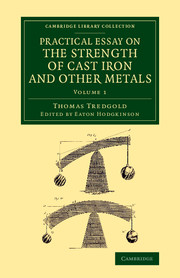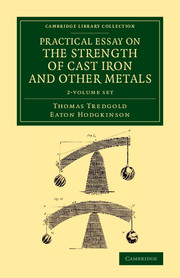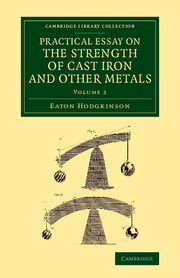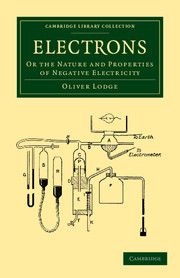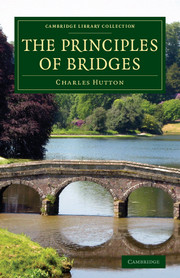Practical Essay on the Strength of Cast Iron and Other Metals
Although cast iron was used in pagoda construction in ancient China, it was in Britain in the eighteenth century that new methods allowed for its production in quantities that enabled widespread use. An engineer who had educated himself tirelessly in technical subjects from carpentry to architecture, Thomas Tredgold (1788–1829) first published this work in 1822. It served as a standard textbook for British engineers in the early nineteenth century, and several translations extended its influence on the continent. Reissued here in the fourth edition of 1842, edited and annotated by the structural engineer Eaton Hodgkinson (1789–1861), who presents his own research in the second volume, this work addresses both practical and mathematical questions in assessing metallic strength. In Volume 1, wherever progress has been made since the original publication, Hodgkinson adds notes to Tredgold's original text, pointing out certain errors.
Product details
No date availablePaperback
9781108070348
338 pages
217 × 140 × 20 mm
0.44kg
4 b/w illus.
Table of Contents
- Advertisement to the fourth edition
- Advertisement to the third edition
- Preface to the second edition
- 1. Introduction
- 2. Explanation of the tables
- 3. Of the forms of greatest strength for beams to resist cross strains
- 4. Of the strongest form of section for beams to resist cross strains
- 5. An account of experiments on cast iron
- 6. Experiments on malleable iron and other metals
- 7. On the strength and deflexion of cast iron
- 8. Of lateral stiffness, with rules and examples
- 9. Resistance to torsion
- 10. On the strength of columns, pillars, or other supports
- 11. Of the resistance to impulsive force
- Plates
- Explanation of the plates.

